

The Theraphosidae contains the largest spiders in the world, some of which are capable of capturing and killing small birds. They are generally quite stout and robust species covered with long hairs which in many species are urticating.
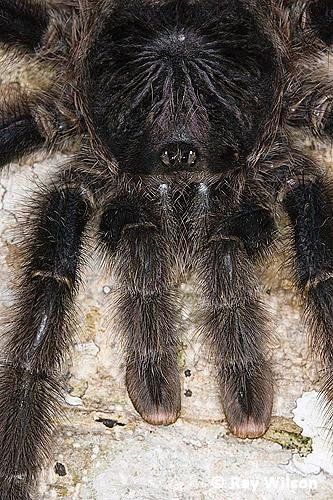
The Peruvian Pinktoe is one of the largest species with mature females often having a leg-span of over 15cm (6in). It is an arboreal rainforest species, hiding by day inside its tube-web located in crevices in tree trunks. It only emerges to hunt during the night.
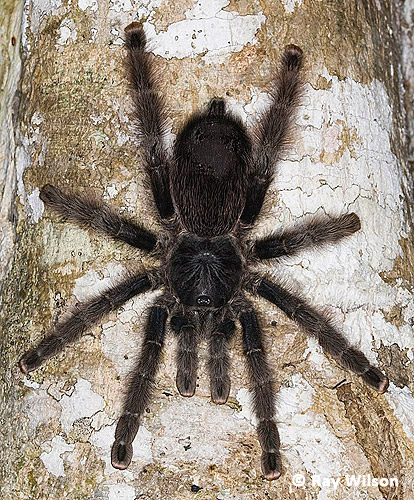
It is not a particularly aggressive species and, like all members of the genus Avicularia, the venom of the Peruvian Pinktoe is not medically significant, but its large, powerful fangs can still deliver a painful bite. Its scientific name is derived from the urticating hairs that cover its body. Unlike some species of tarantula, the Peruvian Pinktoe is unable to shoot these hairs at an aggressor, but if touched, the hairs fall off and can cause severe irritation.
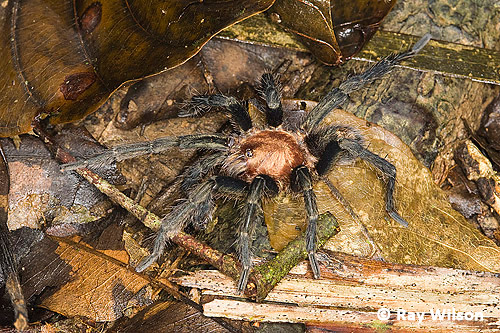
Cyriocosmus tarantulas are among the smallest in the world with most species having a body length of only 2-3cm. Many of the 12 species currently known are quite brightly patterned. All reside exclusively in South America.
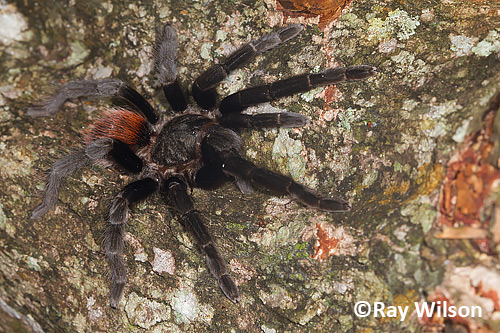
Mexican Redrump Tarantula is very common in Belize and can often be seen hunting on the forest floor at night.
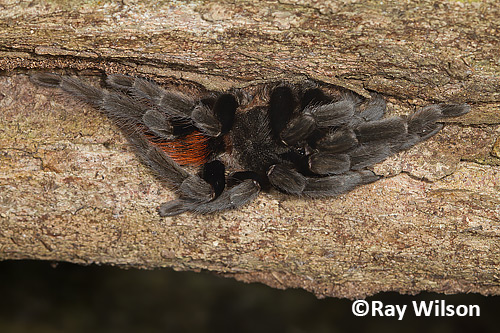
Citharacanthus tarantulas are at first glance superficially similar to the common Red-rump Tarantula that occurs throughout Belize but are considerably smaller and lack the red abdominal hairs of the Red-rump. Like the Red-rump, they are terrestrial tarantulas and spend the day hiding in burrows among the leaf litter, coming out only at night to hunt. In 2000, a new species of Citharacanthus tarantula, C. meermani, was described from a location in the foothills of the Maya Mountains not far from where the below photo was taken. It is very similar to C. livingstoni, which also occurs in the area, with the only differences being in the length, density and structure of the setae on the underside of the trochanter and femur on the front two pairs of legs.
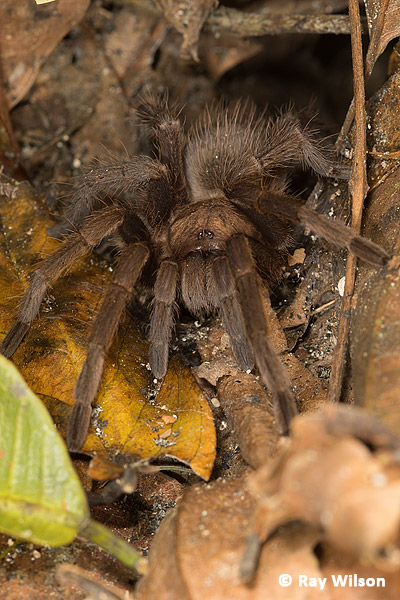
Ray Wilson owns the copyright of all images on this site.
They may not be used or copied in any form without prior written permission.
raywilsonphotography@googlemail.com